Team:UCL/experiments
From 2014.igem.org
(Difference between revisions)
Adamdenyer (Talk | contribs) |
Adamdenyer (Talk | contribs) |
||
| Line 37: | Line 37: | ||
<p>Our literature search identified a number of bacterial species that were found to degrade azo dye compounds including <i>B. subtilis</i> and <i>P. pseudomonas</i>. We were able to obtain a <i>B. subtilis</i> strain from ? and extracted the genomic from this using a Promega Wizard Genomic DNA extraction kit so that we could amplify the azo-reducatase gene (AzoR1). After completing the genomic DNA extracton we produced a gel to determine whether we had successfully extracted the genomic DNA.</p> | <p>Our literature search identified a number of bacterial species that were found to degrade azo dye compounds including <i>B. subtilis</i> and <i>P. pseudomonas</i>. We were able to obtain a <i>B. subtilis</i> strain from ? and extracted the genomic from this using a Promega Wizard Genomic DNA extraction kit so that we could amplify the azo-reducatase gene (AzoR1). After completing the genomic DNA extracton we produced a gel to determine whether we had successfully extracted the genomic DNA.</p> | ||
| - | |||
| - | |||
| - | |||
| - | |||
| - | |||
| - | |||
| - | |||
| - | |||
| - | |||
| - | |||
| - | |||
<h4>Experiment 2: Transforming <i>E. coli</i> with Azo-reductase plasmids</h4> | <h4>Experiment 2: Transforming <i>E. coli</i> with Azo-reductase plasmids</h4> | ||
<div class="byline"><i class="icon-user"></i> Adam Denyer <i class="icon-time"></i> <abbr class="published" title="Monday, October 15, 2013, 8:21 PM">October 15, 2013</abbr> | <div class="byline"><i class="icon-user"></i> Adam Denyer <i class="icon-time"></i> <abbr class="published" title="Monday, October 15, 2013, 8:21 PM">October 15, 2013</abbr> | ||
| Line 84: | Line 73: | ||
<br/> | <br/> | ||
<p>senectus et netus et malesuada</p> | <p>senectus et netus et malesuada</p> | ||
| + | |||
| + | <h4>Experiment 1: Extraction of useful BioBrick plasmids from iGEM 2014 Distribution Kit</h4> | ||
| + | <div class="byline"><i class="icon-user"></i> Adam Denyer <i class="icon-time"></i> <abbr class="published" title="Monday, October 15, 2013, 8:21 PM">October 15, 2013</abbr> | ||
| + | <strong>Protocols </strong> | ||
| + | <a href="/Team:UCL/protocols"><span class="label label-warning">competent cells</span></a> | ||
| + | <a href="/Team:UCL/protocols"><span class="label label-warning">transformation</span></a> | ||
| + | <a href="/Team:UCL/protocols"><span class="label label-warning">miniprep</span></a> | ||
| + | <a href="/Team:UCL/protocols"><span class="label label-warning">digest</span></a> | ||
| + | <a href="/Team:UCL/protocols"><span class="label label-warning">gel</span></a></div> | ||
| + | <br/> | ||
| + | <p>We began our project by identifying a range of BioBrick parts present in the iGEM 2014 distribution kit which we required as part of our cloning strategy. These parts primarily consisted of both constituitive and inducible promoter systems with ribosome binding sites which we could then use in conjunction with our azo-reductase BioBricks to assemble a functional azo dye degrading gene. We also decided that we would use the Red Florescent Protein expresing BioBrick as a control for any further transformation experiments. As the level of DNA present within each plate of the distribution kit is insufficient to perform digest and ligation reactions on it was necessary to transform each of these plasmids into our NEB5alpha competent cells. After growing our transformed cells overnight we then mini-prepped each of them to obtain BioBrick plasmids at suitable concentrations for future experiments.</p> | ||
<h4>Experiment 6: Assembling azo-reductase BioBrick Device(s)</h4> | <h4>Experiment 6: Assembling azo-reductase BioBrick Device(s)</h4> | ||
Revision as of 15:34, 6 September 2014
 "
"
